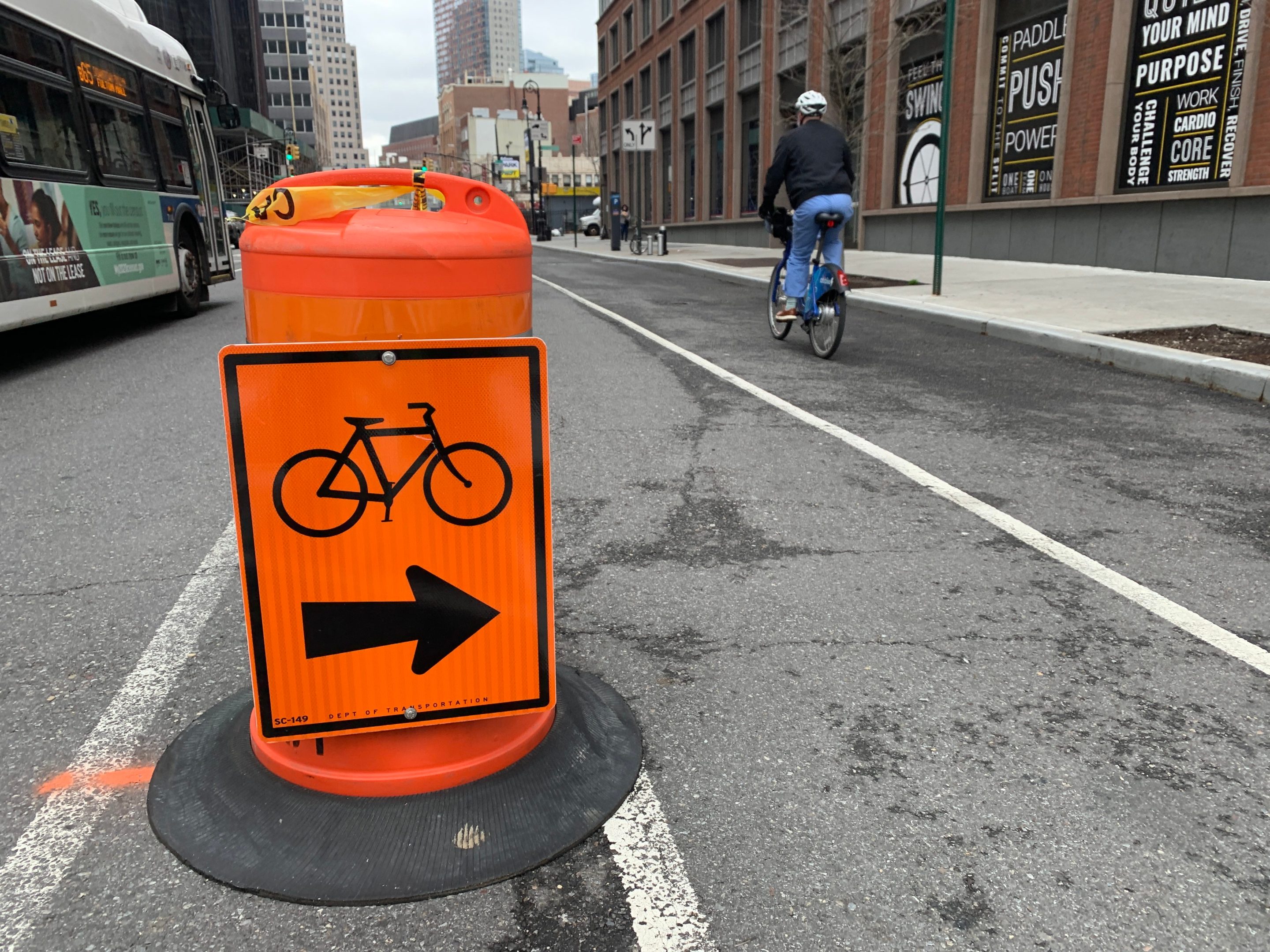As hard as it may be for New Yorkers to imagine right now, this will end. There will come a day when schools reopen, offices welcome back their employees, Broadway theaters raise their curtains, and bars and restaurants — at least those that weathered the storm — begin offering sit-down service once more.
Will the city be ready? Distressingly, the answer seems to be no.
In the midst of this economic crisis, Mayor de Blasio revealed $1.3 billion in emergency cuts to stem the bleeding — including a number of trims to the Department of Transportation budget almost exclusively related to street safety and cycling: $4 million from markings and materials used in Vision Zero street improvement programs, $3 million from protected bicycle lane projects, and another $3 million from Vision Zero public awareness campaigns.
This is the wrong approach, one that will leave the city unprepared to keep up with an unprecedented and likely permanent demand for cycling and other safe ways to get around. The idea that it will somehow be less important to invest in safe, functional streets for people who are not in cars is the wrong lesson to take from the experience of the past two months.
In March, as New Yorkers became increasingly concerned about avoiding exposure to COVID-19 on tightly packed subways and buses, cycling rates grew astronomically, with East River bridge crossings increasing by 52 percent and Citi Bike trips soaring by nearly 70 percent compared to the same period last year. Those numbers have since fallen as shelter-in-place orders have shrunk most people’s lives down to the size of their immediate blocks, but it is entirely possible that the same cycling gains experienced in the run-up to the shut-down will happen in reverse as life slowly returns to normal (whatever that new normal looks like).
Even if subway and bus service returns in full — which seems very unlikely given the MTA’s own financial crisis — lingering virus fears as well as the need to prevent future outbreaks will cause many people to avoid the kind of regular transit delays and service disruptions that lead to overcrowding.
The city faces two choices. One is cut budgets and hope for a return to business as usual with bicycle lanes installed at the typical pace of a few miles here and there on a timeline dictated largely by community board schedules and the seasonality of laying street markings. That’s a recipe for disaster, as many people who find themselves afraid of taking transit will opt for taking a car over riding a bicycle if cycling feels unsafe or inconvenient.
Without a plan to accommodate people on bikes and make them comfortable the cars will come flooding back, leading to a vicious cycle of people choosing cars over bikes … because of all the cars. Beyond the congestion and carbon emissions this will bring, it’s worth noting that the proposed $3 million cut to protected bicycle lane projects comes from the $58 million “Green Wave” plan, something that was only wrestled out of City Hall after 15 people had been killed on city streets between January and July last year and more than 1,000 people staged a die-in in Washington Square Park. The aftereffects of this public health crisis cannot lead to the return of another: traffic violence.
Instead of cuts, the mayor should increase funding to create a citywide network of wide, comfortable bicycle lanes. This will mean drastically changing, or even dispensing with, the resource-intensive community board process. If budgets are tight and people are dying, there quite literally isn't a reason to argue about parking spaces anymore.
The need to accommodate legions of new riders will also mean taking a fresh look at bicycle lane design; riding on five-foot-wide cycle lanes at a time when we are all supposed to stay at least six feet away from each other simply won’t work. New York should take a cue from Berlin and other cities that are installing bike lanes that allow for safe passing. If the money for laying down street markings isn’t there, then creating bicycle boulevards that filter out all but emergency vehicles and local deliveries is an easy and inexpensive option.
This is not a time for retreat from smart policies. It is a time for courage. The idea of charging for on-street parking and pouring that revenue back into safety projects that benefit pedestrians and cyclists now needs to be taken far more seriously than before. Such money could also be used to install secure bicycle parking, provide tax credits for the purchase of e-bikes or cargo bikes and expand discounted or free Citi Bike memberships to the growing number of workers we now appreciate as essential to this city’s economy and health. Any concern for charging car owners for parking at a time when so many are facing their own personal economic crises should be offset by an equal, if not larger, concern for the many more New Yorkers who can not afford a car and who may now find even the cost of a monthly Metrocard out of reach.
Beyond specific policy proposals, the COVID-19 crisis has taught us that cycling is not a cute lifestyle choice. It is a lifeline. It is not a niche interest of a vocal advocacy community, but a necessity for all residents — and the foundation of the livable city we need. For so many New Yorkers riding a bicycle has moved from being a transportation alternative to being their default choice. It should not be sacrificed on the altar of budget cuts merely because the mayor refuses to understand its importance.
Doug Gordon is a Brooklyn-based street safety activist TV writer and co-host of "The War on Cars" podcast. Follow him on Twitter @brooklynspoke.






